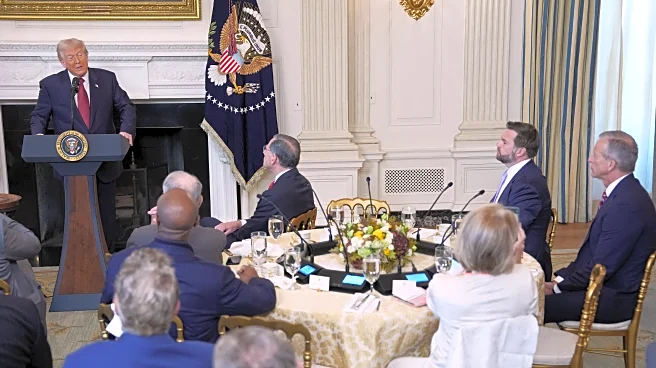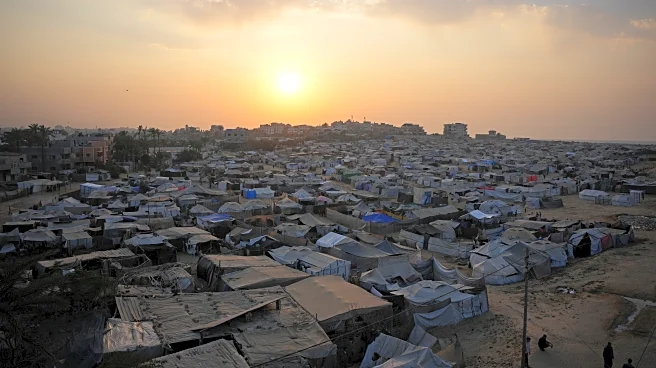What's Happening?
The United States has taken over the management of humanitarian aid delivery to the Gaza Strip, a role previously held by Israel. This shift in responsibility is being coordinated through a U.S. military
center located in southern Israel. While Israel remains involved in discussions, the final decisions regarding aid distribution will be made by the United States. The transition has been described as chaotic, with the U.S. center's operations in Kiryat Gat being characterized as disorganized. The U.S. is also pushing for a UN Security Council resolution to formalize President Trump's Gaza cease-fire deal, aiming to prevent a return to conflict between Israel and Hamas.
Why It's Important?
This development signifies a significant shift in the dynamics of international involvement in the Gaza conflict. By taking a leading role in aid distribution, the U.S. is asserting its influence in the region, potentially altering the balance of power and decision-making. This move could impact Israel's control over Gaza-related matters, as it now plays a secondary role. The U.S. initiative to enshrine the cease-fire deal in international law underscores its commitment to maintaining peace and stability in the region. The outcome of these efforts could affect regional politics and the humanitarian situation in Gaza.
What's Next?
The U.S. will continue to engage with international stakeholders, including the UN Security Council, to solidify the cease-fire agreement. The success of these diplomatic efforts will be crucial in preventing further conflict. Additionally, the effectiveness of the U.S.-led aid distribution will be closely monitored, as it could influence future international interventions in the region. Reactions from Israel and other regional players will be pivotal in shaping the next steps in this ongoing situation.













